Point Reyes: Gateway to Adventure!
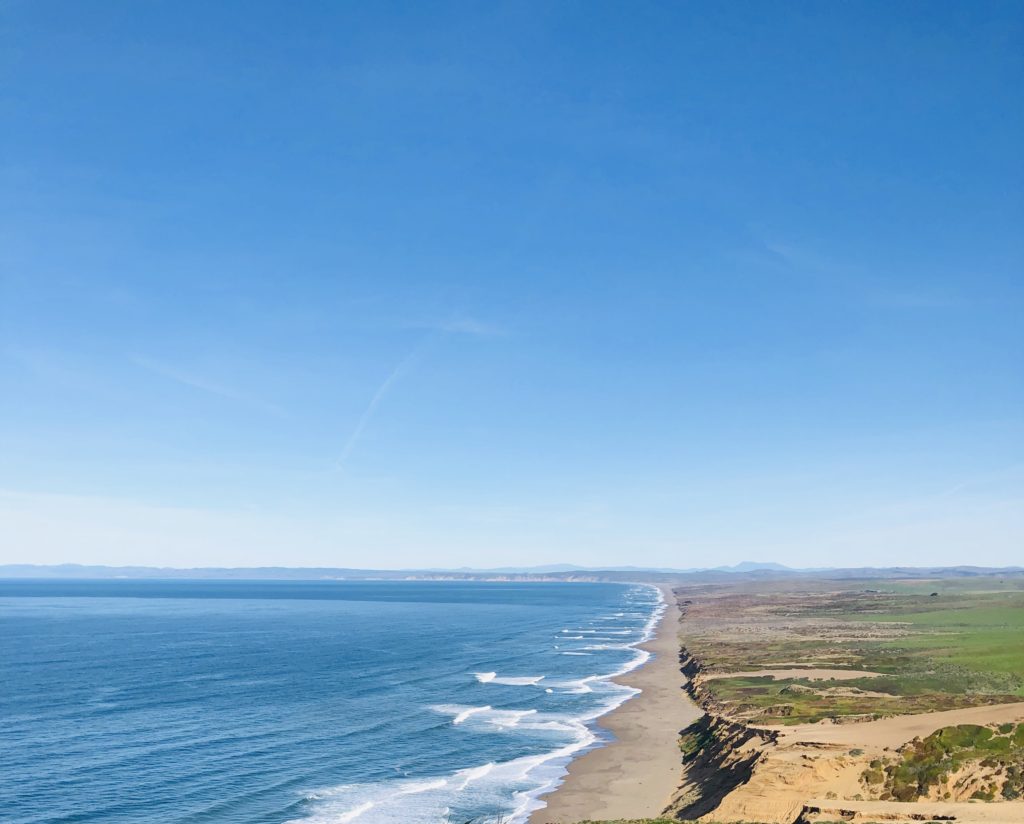 Point Reyes is an incredibly picturesque area located in Marin County. It is only about an hour and a half drive from San Francisco but it feels like you are in a different world here, with thousands of acres of wilderness, secluded villages, rolling hills with dairy farms, achingly beautiful beaches, and amazing wildlife. If you look at geologic maps, the San Andreas Fault Line slices through the area like a knife cutting the end off a loaf of bread. Point Reyes is the end of the loaf being cut off. It sits on the Pacific Tectonic plate, the same one as the country of Japan, while the rest of Marin County is on the North American plate. Point Reyes is basically an island that moved up the coast on this plate over millions of years to its present location. Apparently, Point Reyes Peninsula continues to move 3-4 centimeters a year towards the northwest. If it keeps moving it could ostensibly end up in Alaska or something. Crazy, right? Anyway, here are the FIVE most fun, must see and do things in the Point Reyes area.
Point Reyes is an incredibly picturesque area located in Marin County. It is only about an hour and a half drive from San Francisco but it feels like you are in a different world here, with thousands of acres of wilderness, secluded villages, rolling hills with dairy farms, achingly beautiful beaches, and amazing wildlife. If you look at geologic maps, the San Andreas Fault Line slices through the area like a knife cutting the end off a loaf of bread. Point Reyes is the end of the loaf being cut off. It sits on the Pacific Tectonic plate, the same one as the country of Japan, while the rest of Marin County is on the North American plate. Point Reyes is basically an island that moved up the coast on this plate over millions of years to its present location. Apparently, Point Reyes Peninsula continues to move 3-4 centimeters a year towards the northwest. If it keeps moving it could ostensibly end up in Alaska or something. Crazy, right? Anyway, here are the FIVE most fun, must see and do things in the Point Reyes area.
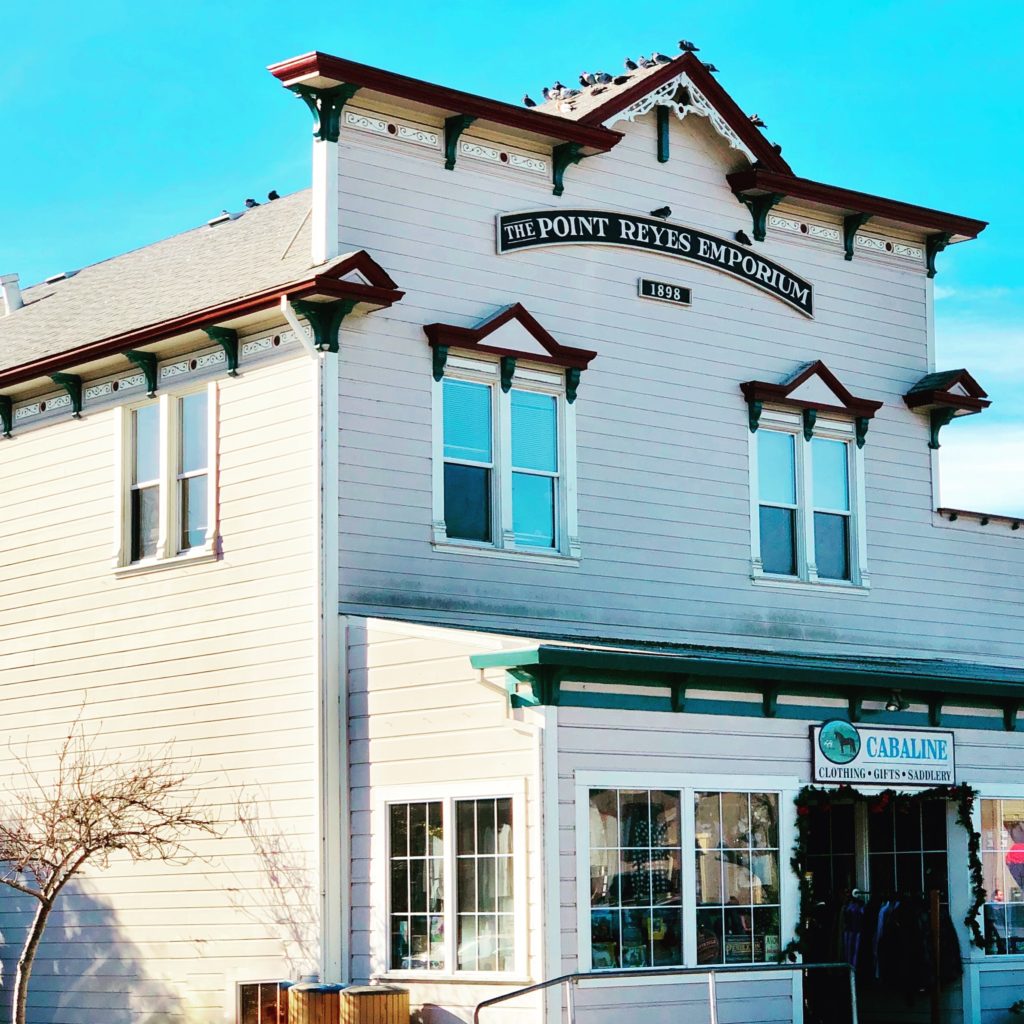
1. POINT REYES STATION
This tiny town, population 350, was previously a stop on the North Pacific Coast Railroad that connected the northern town of Cazadero all the way to its southern stop in Sausalito. After the great 1906 earthquake, this railway was used to haul redwood and other lumber to rebuild San Francisco. The wonderful old Victorian buildings in Point Reyes Station offer a glimpse of the past with a plethora of cute little shops and amazing restaurants. It is a great place to stop, shop, and eat. Places to eat here include Cafe Reyes which is known for its bomb diggety wood-fired pizza and fresh shucked local oysters and the Station House Cafe which serves everything from beer and burgers to fancier fare, all sourced from local farms and creameries. Station House Cafe has it all, from their quaint bar to their lovely outdoor garden seating and there is even live music on Sundays with no cover charge. The Bovine Bakery offers coffee, espresso, and yummy baked goods and soups. Cowgirl Creamery creates delicious artisanal cheeses as well as soups, salads, and sandwiches at their local digs. For more information on the unique food venues here, check out Where to eat in Point Reyes Station.
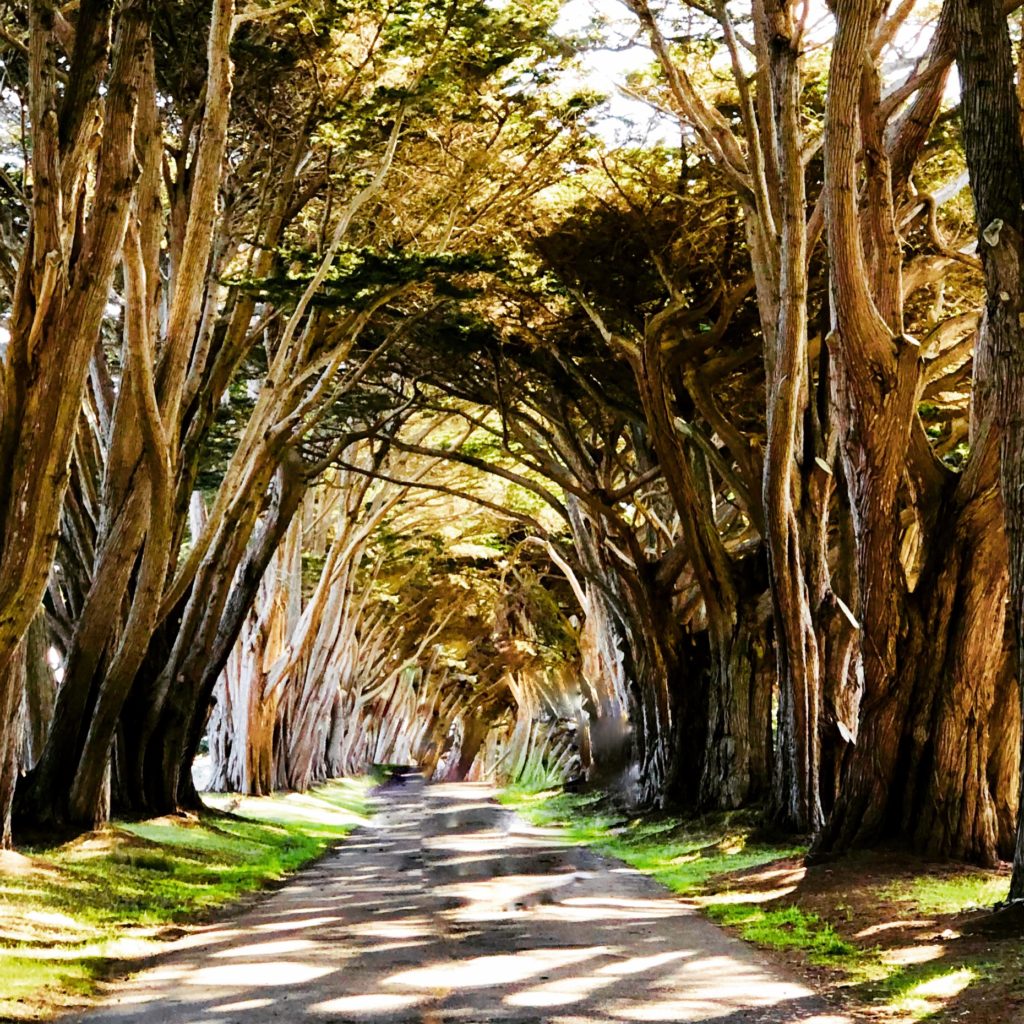
2. CYPRESS TREE TUNNEL & ART DECO RADIO STATION
From Point Reyes Station, take Mesa Road west to Shoreline Highway. Follow for .2 miles until you come to Sir Francis Drake Boulevard. Turn right and follow for 10 miles to see the famous Cypress Tree Tunnel. This has been photographed a gazillion times by probably every photographer on the planet because it is so ridiculously amazing. The cypress trees were originally planted in the 1930s. The road through the trees leads to an old white art deco building that houses the Point Reyes National Seashore North District Operations Center and the KPH RCA Radio Station. KPH is the only surviving Morse code coastal station in North America. It was created in the early 1900s and was called the “wireless giant of the Pacific”. For decades, it provided a communication link to ships at sea using telegrams and radioteletype. The station was nearly destroyed after it fell into disrepair, but fortunately, the Maritime Radio Historical Society, in conjunction with the Point Reyes National Seashore, came to the rescue. Today, you can hear KPH every Saturday from 12-4 pm. Special events and weekend tours are occasionally held at the station. For more information see KPH Maritime Radio Station. Where: 17400 Sir Francis Drake Blvd, Inverness, California. Note: The only roadside signage is for the “North District Operations Center” and is on the right side of the road adjacent to the Cypress Tree Tunnel. Visitors are asked to park along the highway or follow the driveway to the parking lot on the left end closest to the station. They request that you do NOT park along the driveway next to the cypress trees because it damages their roots. Save the trees, people!
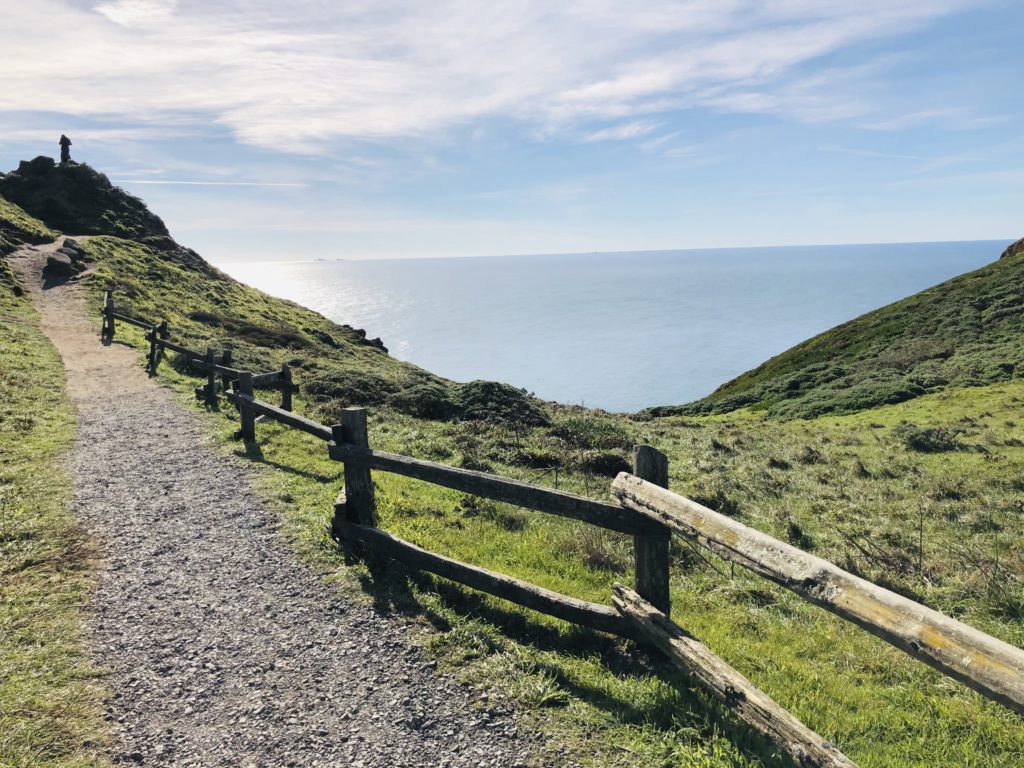
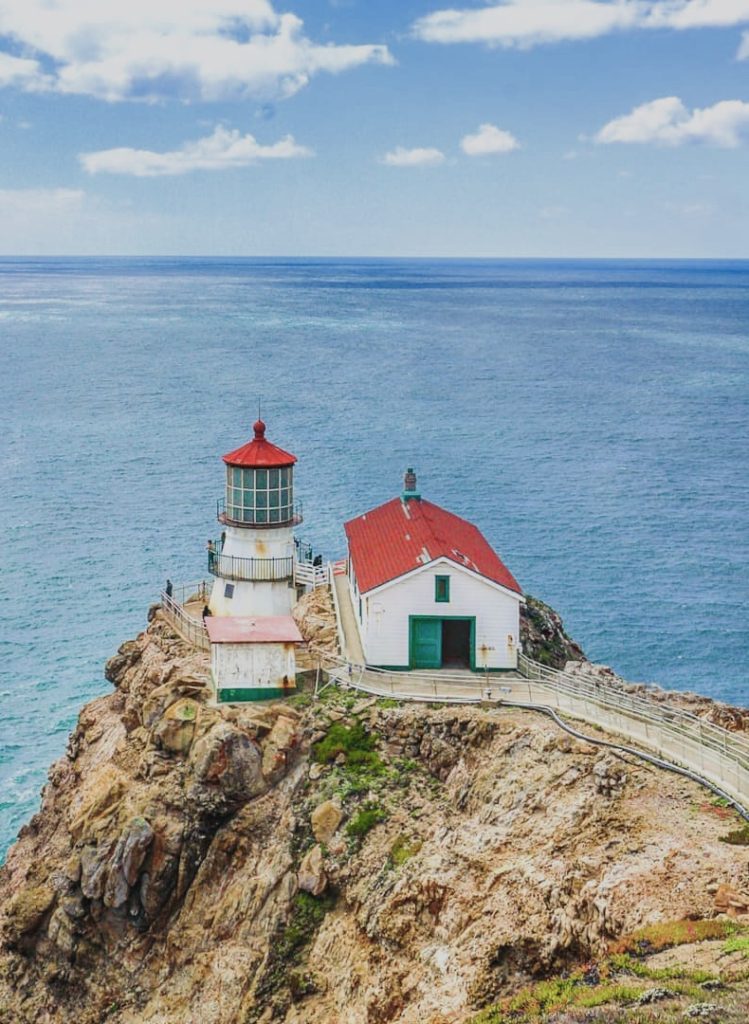
3. POINT REYES LIGHTHOUSE
Continue west on Sir Francis Drake Boulevard towards the Point Reyes Lighthouse. Your travels will become very lumpy, bumpy, and bouncy as you follow the road past bucolic farms with happily grazing Holsteins. These black and white bovines gave me warm fuzzies. They reminded me of my days as a cheesehead, living in the heart of dairy farm country in Wisconsin. The Point Reyes Lighthouse, a national historic landmark, was built in 1870. It was in service until 1975 when the Coast Guard installed an automated light below it. The lighthouse is currently owned by the National Park Service. Although it is not currently open due to restoration, you can follow its progress here: Point Reyes Lighthouse. The most current blog post indicates that it will be closed through January 31, 2019. Even with the lighthouse closed, this is a great area for hiking and has amazing vantage points to view the wind-swept coastline and possibly do some whale watching. If you want to wait and visit when the lighthouse is open, be aware that it is a .4 mile walk down 308 stairs down to the lighthouse. The lighthouse website indicates that they will return to their regular hours (Friday through Monday from 10 am-4:30 pm) once restoration is completed. Wear good walking shoes and bring a jacket as it can be chilly and windy. There is no entrance fee. There are restrooms in the parking area. Please remember to take your garbage with you and respect the property and wildlife here. Where: 27999 Sir Francis Drake Blvd. Inverness, CA 94937. Phone: 415-669-1534
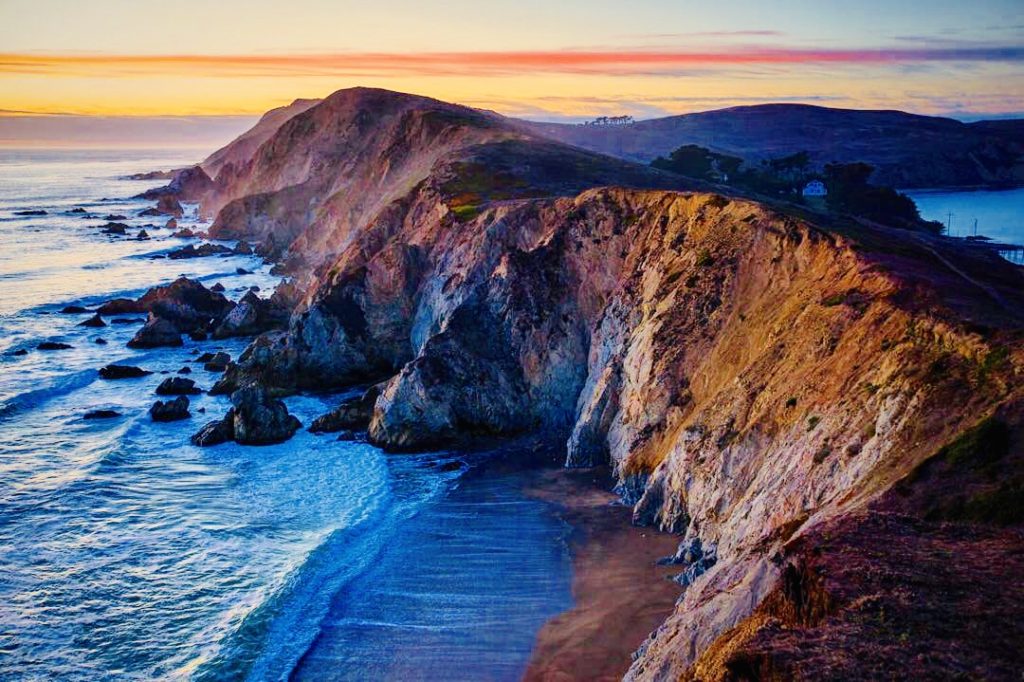
4. ELEPHANT SEALS & HISTORIC LIFEBOAT STATION NEAR CHIMNEY ROCK
When you leave the lighthouse, follow the one lane Chimney Rock Road to the right to the Chimney Rock parking area. Here you can check out the history of life-saving surf boats at the station (read about them here), observe the elephant seal rookery at Drake’s Beach, or hike three miles round trip to Chimney Rock for breathtaking cliffside views of the beach. Beginning in December, male elephant seals arrive and are soon followed by pregnant females in preparation for the birth of their pups. Point Reyes is one of only a handful of places on the Pacific Coast where they can be observed. Elephant seals were previously hunted to the point of near extinction for their oil-rich blubber. Fortunately, due to protection, their population has revived. The Point Reyes elephant seal population is now estimated to be between 1500 and 2000. Last year around Valentine’s Day, most of Drake’s Beach was closed due to being completely inundated with these honkers going bonkers! Be aware that no dogs are allowed on Drake’s Beach. It is a great place to stop and have a picnic, build sand castles, or collect driftwood and sea glass. You may want to bring binoculars for better views of the wildlife here. A visitor’s center and restrooms are available near the parking area. For more information see Drake’s Beach. If you enjoy history, by this time you may be wondering what is up with Sir Francis Drake Boulevard, Drake’s Beach, Drake’s Bay, etc. Apparently, Sir Francis Drake originally discovered Point Reyes in 1579, named it “New Albion”, and claimed it for England. In 2012, the area was designated a National Historic Landmark.
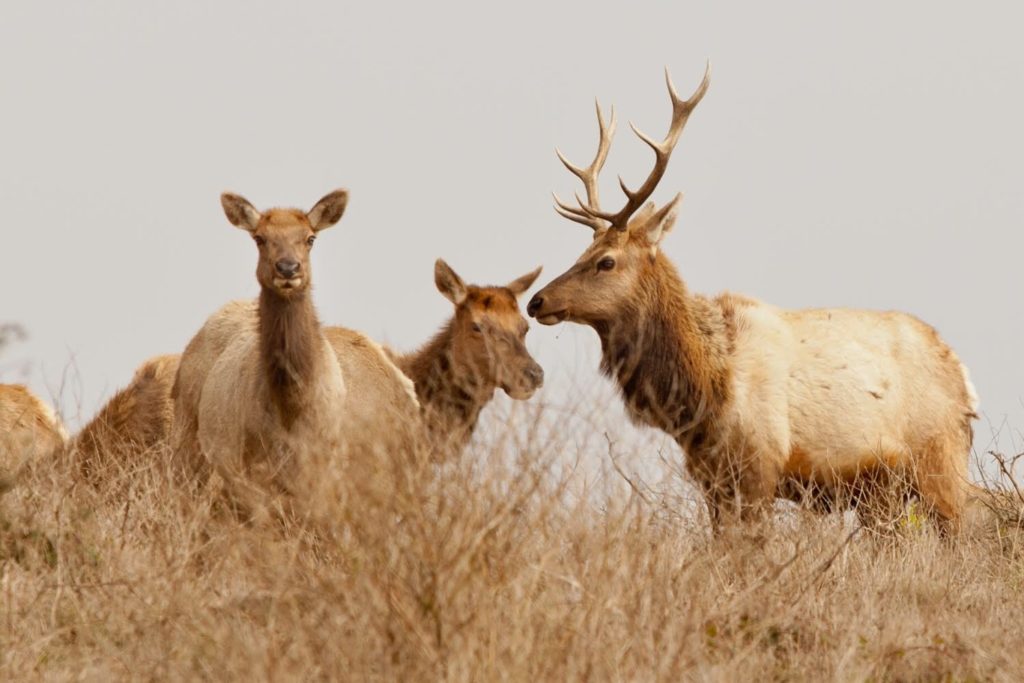
5. HIKING AT TULE ELK PRESERVE BY TOMALES BAY
Follow Sir Francis Drake Boulevard east for .3 miles until you come to Pierce Point Road, and follow this for 3.8 miles, staying left. The hike begins at the abandoned Pierce Point Ranch and ends on stately bluffs overlooking the ocean. The hike is 9.4 miles round trip. Stay on the well marked and maintained Tomales Point Trail to view herds of tule elk as they graze overlooking Tomales Bay. Tule elk are found only in California. They get their name from the tule, or sedge, in the freshwater marshes they feed upon. They almost became extinct in the late 1800s but due to conservation measures, there are approximately 5700 tule elk in the wild in California today per the California Department of Fish and Wildlife. Studies have shown that they play a critical role in maintaining native ecosystems. The males, with their antlers, remind me of Santa’s reindeer. Apparently, the best time to see the males bugling and fighting with each other over the females is in August through October. Bugling is a call the bulls make to attract the girls. Because they are wild animals, please observe them from a distance, stay on the trail, move and talk quietly, do not bring pets along, and do not feed the elk. The park service also asks that you do not remove any elk antlers as they provide an important source of calcium for other wildlife species. For more information, check out the California Department of Fish and Wildlife’s Tule Elk page. Restrooms are available at the beach parking lot on Pierce Point Road. Where: Pierce Point Road, Inverness, CA 94937 Phone: 415-464-5100
Helpful Hints:
- I highly recommend checking out the Point Reyes National Seashore Association, it has so much information it could literally be made into a book or even a documentary film. Seriously.
- If you want to check out the weather before you visit, see the Point Reyes Lighthouse Visitor Center Webcam
I hope you enjoyed this post and get a chance to visit Point Reyes. Tell me what you think! Thank you for visiting my blog! Wishing you peace, love, happiness, & beautiful vistas.
2 Comments
Jay Slupesky
What a wonderful post. I appreciate your thorough research and your great writing.
Monterey Farmgirl
Thank you!